‘Uncontacted’ Amazon indigenous tribe uses bows and arrows to attack loggers in fight that left one injured – weeks after they were first sighted on riverside
Members of an ‘unprotected’ indigenous tribe in the Amazon used bows and arrows to attack loggers, injuring at least one person.
The violent conflict came weeks after the group known as the Mashco Piro were spotted wielding spears on the banks of a river in remote Peru.
Campaigners have warned that the tribe, considered the world’s largest untouched people, is under threat from logging activities that are disrupting their rainforest habitat.
The fight took place in an illegal logging camp outside their Madre de Dios territorial reserve along the Pariamanú River on July 27, a local indigenous organization said.
However, further details are still unclear and there are unconfirmed reports that two loggers may have been killed.
The Mashco Piro were spotted swinging spears on the banks of a river in remote Peru (photo taken in June)
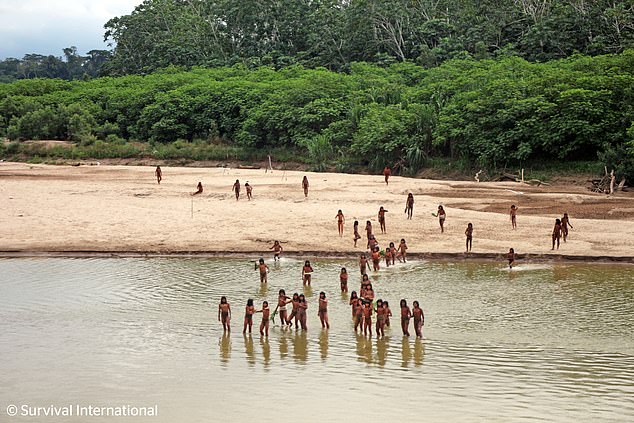
There are fears for the tribe’s survival that they will move out of the rainforest due to logging in the area (photo in June)
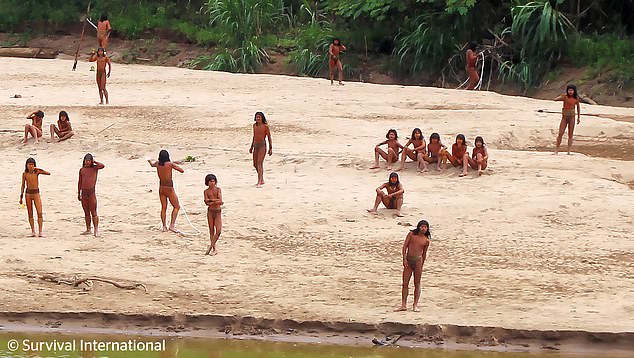
Tribesmen rest on the banks of the river while others carry spears and pause to talk (photo in June)
Teresa Mayo, Peru researcher for Survival International, an NGO that supports indigenous groups, said the conflict took place in an area of rainforest that is not formally protected by the government, although it is considered Mashco Piro territory.
The incredible video, released by Survival International last month, shows about 50 men and boys standing on the dusty riverbank, wrapped in loincloths, their hair long and their bare feet chalky from the rough ground.
The group stands around in small groups, some jogging to pick up large spears lying in the dirt, others chatting, gesticulating to each other and helping to carry items along the river.
‘These incredible images show large numbers of isolated Mashco Piros living alone, just a few kilometres from where the loggers are due to start their work,’ said Caroline Pearce, director of Survival International, at the time.
According to the NGO, the Mashco Piros are rarely seen and hardly communicate with others.
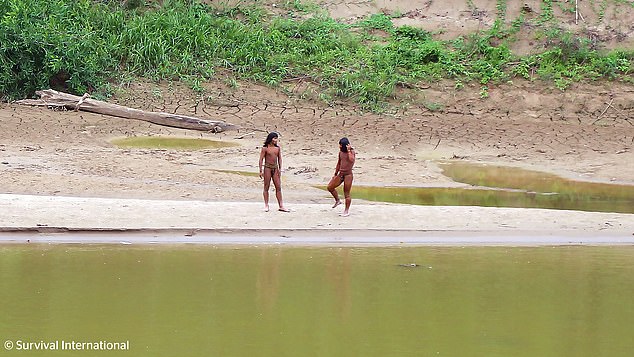
Rare photos show the tribe emerging from the rainforest and interacting on the riverbanks (photo taken in June)
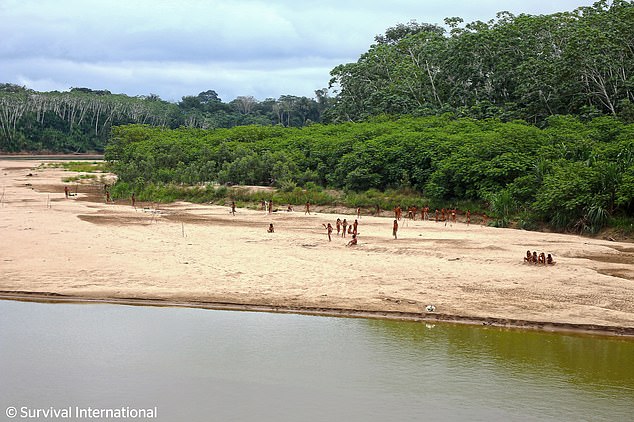
Experts fear the tribe is being forced from their homes by nearby logging activities (photo in June)
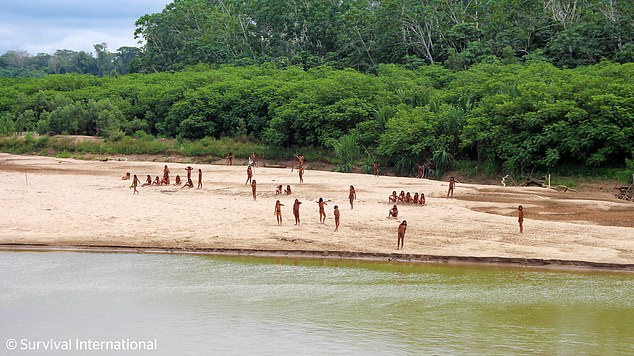
The tribe rarely has contact, even with other tribes, and keeps to itself in a small area in southeastern Peru (photo in June)
Several logging companies own timber concessions in the area where the Mashco Piro live.
According to Survival International, one company, Canales Tahuamanu, has built more than 200 kilometres of roads for its logging trucks to use to extract wood.
The company is certified by the Forest Stewardship Council, which indicates that it has 53,000 hectares (130,000 acres) of forest in Madre de Dios for the extraction of cedar and mahogany.
In 2022, members of the Mashco Piro tribe shot two Catahua workers with bows and arrows while they were fishing on the Tahuamanu River, killing one person.
Survival International is now calling on the Forest Stewardship Council (FSC) to decertify Catahua’s activities and for support to protect unreached tribes.
The Mashco Piro have also been spotted across the border in Brazil, said Rosa Padilha of the Indigenous Mission Council of the Brazilian Catholic bishops in the state of Acre.
“They are fleeing from loggers on the Peruvian side,” she said.
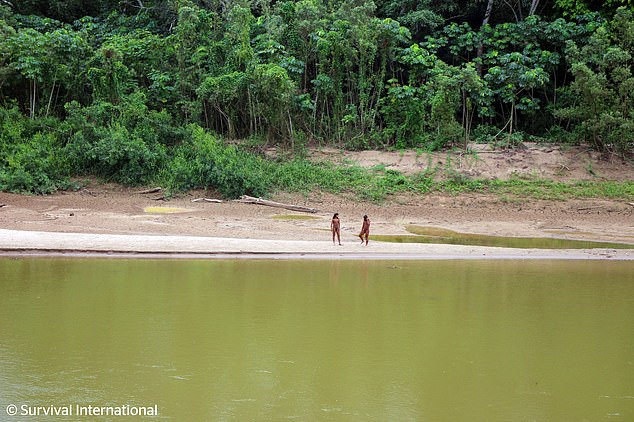
Two years ago, members of the tribe clashed with loggers, shooting two of them with arrows while they were fishing in a river (photo in June)
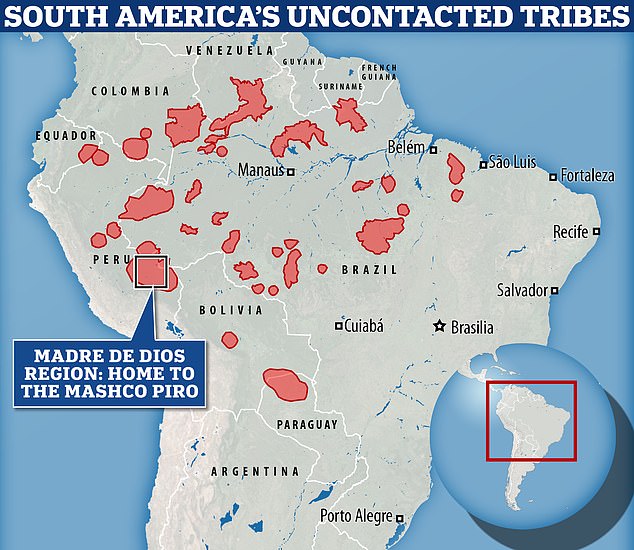
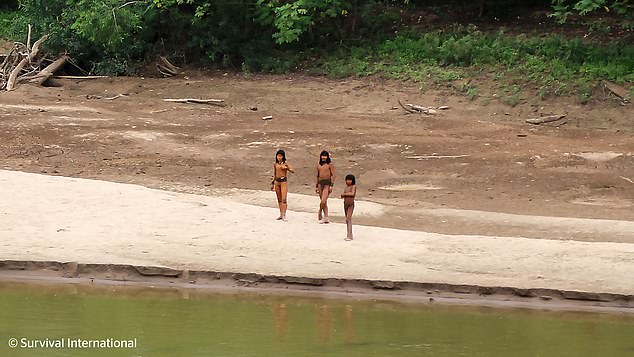
The tribe was seen in rare footage from June walking along the banks of a river in Peru’s Madre de Dios region (June photo)
“This time of year they come to the beaches to get (Amazon turtle) eggs. That’s when we find their footprints in the sand. They leave a lot of turtle shells behind.”
“They are a people without peace, restless, because they are always on the run,” Padilha said.
According to Survival, there are more than 100 pristine tribes worldwide, but many of these tribes are threatened with extinction due to destruction of their habitat by outsiders.
Survival International warns the Peruvian government that it has still not signed legislation for several indigenous territories on which these groups depend for their survival.
There are similar fears for tribes on the other side of the world. In Indonesia, the Hongana Manyawa are facing eviction from their home atop the world’s largest nickel deposit on Halmahera Island.
Some came out of their isolation for the first time to ask miners for food as they moved through the forest to make way for new mines.
Survival International warned that they do not know how long the tribe will survive after the encounter.
Contact with outsiders can be life-threatening due to exposure to new diseases to which isolated people would not have built up resistance.
